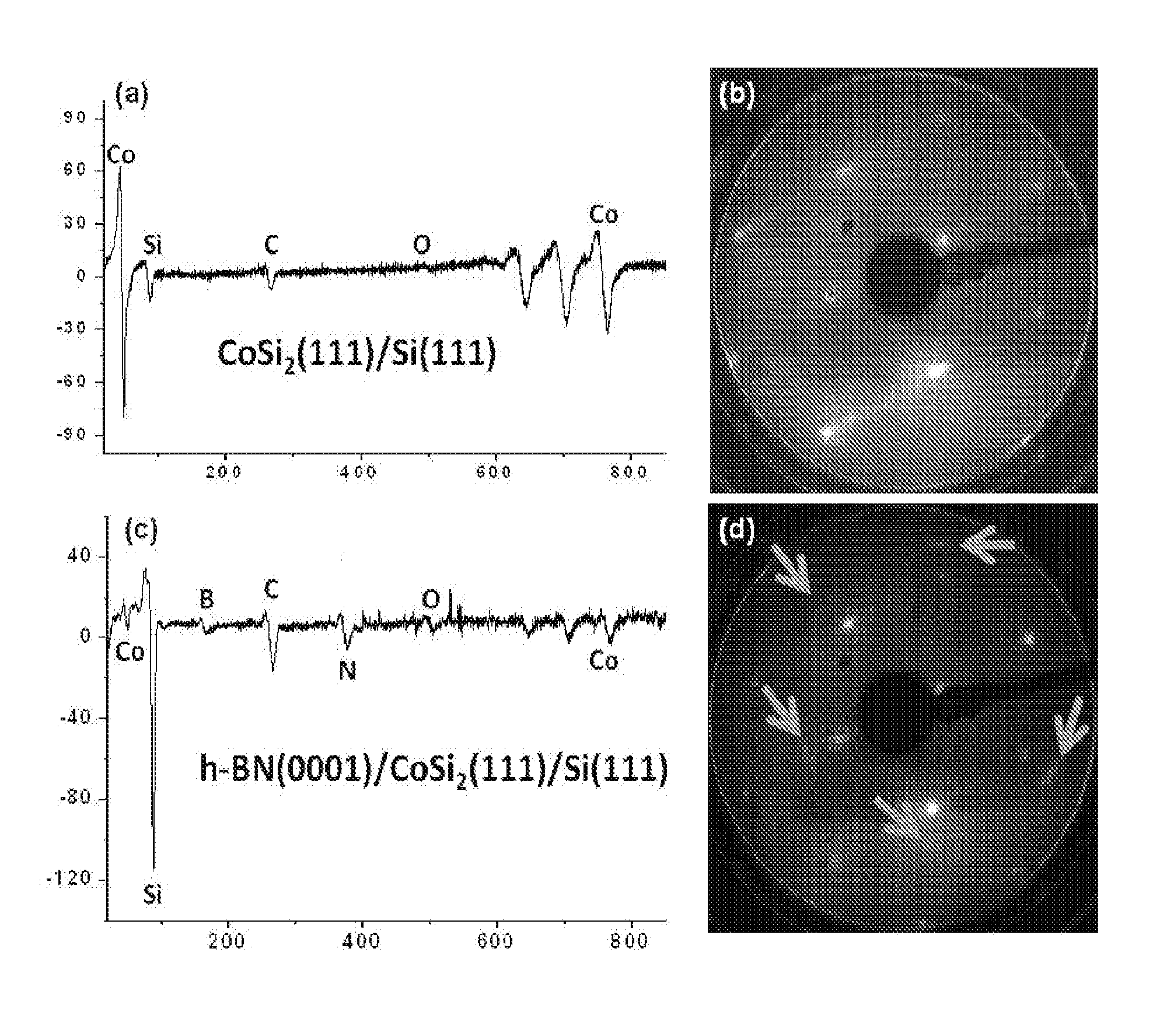Controlled epitaxial boron nitride growth for graphene based transistors
a graphene-based transistor and boron nitride technology, which is applied in the direction of basic electric elements, electrical equipment, semiconductor devices, etc., can solve the problems of graphene/sic transistors with on/off ratios of 30, hardly practical for most applications, and graphene applications involving si cmos fets. , the process is extremely inefficien
- Summary
- Abstract
- Description
- Claims
- Application Information
AI Technical Summary
Benefits of technology
Problems solved by technology
Method used
Image
Examples
Embodiment Construction
Results
[0018]The data in Table I demonstrates the significant impact of substrate / graphene interactions on graphene properties, including strong interfacial charge transfer, and band gap formation. Charge transfer may strongly impact carrier mobility in graphene [7], while graphene band gap formation at zero applied voltage may have both positive (increased on / off ratio) and negative (decreased carrier mobility) implications for graphene-based FET-like devices. Additionally, graphene growth on magnetic oxides has substantial implications for induced graphene magnetic behavior [8].
Charge Transfer: Why BN Matters
[0019]The data in Table I demonstrates that graphene / substrate interactions can profoundly affect graphene properties. Graphene was grown by CVD on a monolayer of h-BN(0001) formed by atomic layer deposition (ALD) on Ru(0001) [1]. Scanning tunneling spectroscopy (STS) and low energy electron diffraction (LEED) data showed significant orbital hybridization at the BN / Ru and grap...
PUM
| Property | Measurement | Unit |
|---|---|---|
| band gap | aaaaa | aaaaa |
| band gap | aaaaa | aaaaa |
| Néel temperature | aaaaa | aaaaa |
Abstract
Description
Claims
Application Information
 Login to View More
Login to View More - R&D
- Intellectual Property
- Life Sciences
- Materials
- Tech Scout
- Unparalleled Data Quality
- Higher Quality Content
- 60% Fewer Hallucinations
Browse by: Latest US Patents, China's latest patents, Technical Efficacy Thesaurus, Application Domain, Technology Topic, Popular Technical Reports.
© 2025 PatSnap. All rights reserved.Legal|Privacy policy|Modern Slavery Act Transparency Statement|Sitemap|About US| Contact US: help@patsnap.com



